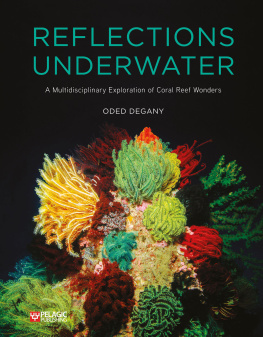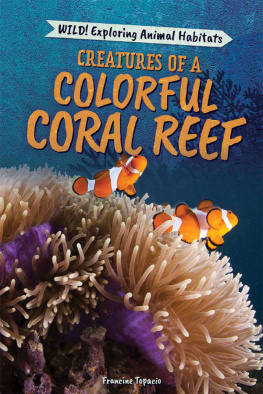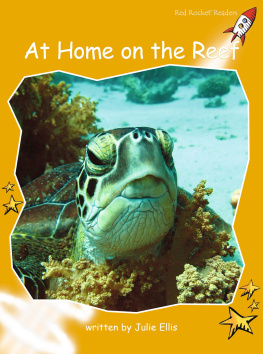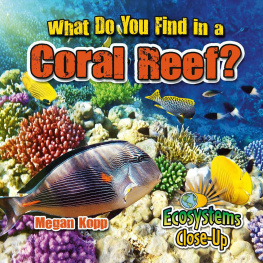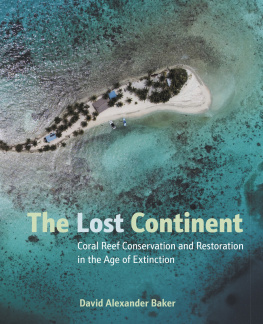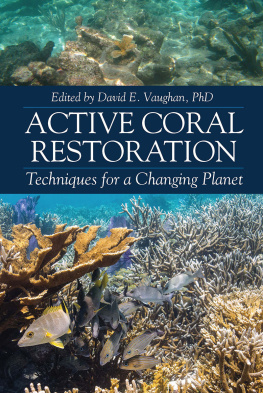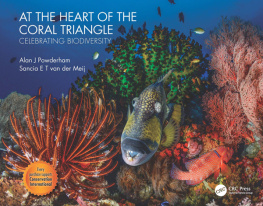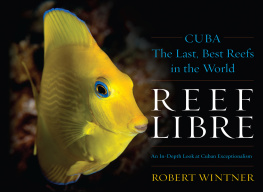Published in 2020 by The Rosen Publishing Group, Inc. 29 East 21st Street, New York, NY 10010
Copyright 2020 by The Rosen Publishing Group, Inc.
All rights reserved. No part of this book may be reproduced in any form without permission in writing from the publisher, except by a reviewer.
First Edition
Editor: Sarah Machajewski
Book Design: Tanya Dellaccio
Photo Credits: Cover Neal Wilson/Moment/Getty Images; p. 5 Dani Vincek/Shutterstock.com; p. 7 (Cape Verde) Susana_Martins/Shutterstock.com; p. 7 (Charles Darwin)https://upload.wikimedia.org/wikipedia/commons/1/18/Charles_Darwin_by_G._Richmond.png; p. 9 (Vila Franca do Campo) De Visu/Shutterstock.com; p. 9 (basalt rock) arka38/Shutterstock.com; p. 9 (obsidian rock) Bjoern Wylezich/Shutterstock.com; p. 11 (Mauna Kea) Galyna Andrushko/Shutterstock.com; p. 11 (Samoa Islands) Martin Valigursky/Shutterstock.com; p.. 13 (top) Cingular/Shutterstock.com; p.13 (bottom) Hamizan Yusof/Shutterstock.com; p. 14 Edward Haylan/Shutterstock.com; p. 15 lavizzara/Shutterstock. com; p. 17 Kevin J. Frost/Shutterstock.com; p. 19 Siraphob Werakijpanich/Shutterstock.com; p. 21 (HMS Beagle) Bettmann/Getty Images; pp. 21 (coral reef), Photo 12/Universal Images Group/Getty Images; p. 22 https://upload.wikimedia.org/wikipedia/commons/c/ce/Alexandre_Agassiz._Portrait_Wellcome_M0016605_%28cropped%29.jpg; p. 23 The Asahi Shimbun Premium/The Asahi Shimbun/Getty Images; p. 25 Sylvain CORDIER/Gamma-Rapho/Getty Images;p. 27 (top) Universal Images Group/Universal Images Group Editorial/Getty Images; p. 27 (bottom) Pascale Gueret/Shutterstock.com; p. 29 Stocktrek Images/Getty Images; p. 30 RWBrooks/Shutterstock.com.
Library of Congress Cataloging-in-Publication Data
Names: Klatte, Kathleen A., author.
Title: Reefs and volcanoes : how Earths atolls formed / Kathleen A. Klatte. Description: New York : PowerKids Press, [2020] | Series: Earths history through rocks | Includes index.
Identifiers: LCCN 2018050271| ISBN 9781725301603 (pbk.) | ISBN 9781725301627 (library bound) | ISBN 9781725301610 (6 pack)
Subjects: LCSH: Coral reefs and islands--Juvenile literature.| Islands--Juvenile literature. | Volcanoes--Juvenile literature.
Classification: LCC GB461 .K53 2020 | DDC 551.42/4--dc23
LC record available at https://lccn.loc.gov/2018050271
Manufactured in the United States of America
CPSIA Compliance Information: Batch #CSPK19. For Further Information contact Rosen Publishing, New York, New York at 1-800-237-9932.
WHAT IS AN ATOLL?
What is a reef? A volcano? An island? And how do they come together to form an atoll? An atoll is a ring of coral surrounding a lagoon. Atolls are the result of geological and biological processes and take millions of years to form. Atolls are always changing.
Some atolls are barely visible above the sea. Before the invention of tools such as sonar, this caused many shipwrecks. Other atollssuch as those that make up the Maldivesare large enough for people to live on them. Atolls have fascinated sailors, naturalists, and scientists for centuries. Although geologists and other scientists had theories about how atolls formed, the technology to really understand the process didnt exist until the 20th century.
GEOLOGISTS
Scientists who study rocks to learn about Earth are called geologists. They can learn about things that happened long ago by studying the minerals and the fossilized plants and animals found in different types of rock. Geologists often study events that happened thousands or even millions of years ago.
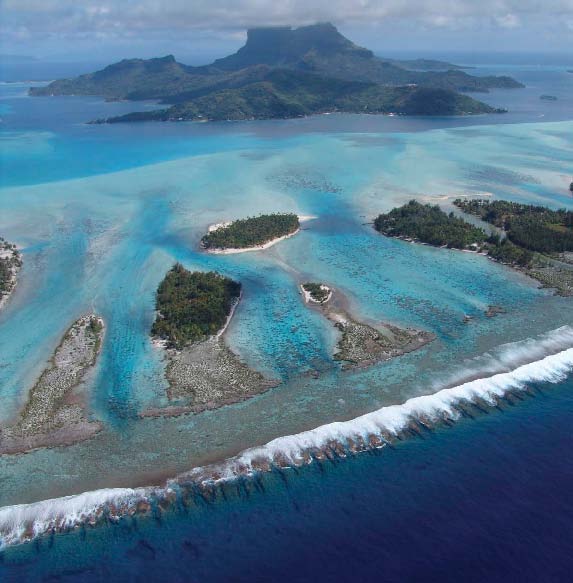
The Maldives, shown here, is a country in the Indian Ocean made up of 26 atolls!
EVER-CHANGING EARTH
Earth is always changing. It renews and rebuilds itself. Have you ever built something out of blocks and then taken it apart and built something new from the pieces? Earth does that, too.
Atolls form following several kinds of changes that happen togethersome building up, some breaking down. Volcanoes create new layers of rock. Wind, water, and wildlife deposit material, or matter, on top of the volcanic rock. Living things settle onto that land. Over time, wind, weather, and waves break the rock down into sand through a process called erosion.
Sometimes, land sinks into the sea. Reefs surrounding the land continue to grow around it. As the reefs grow larger and form a circle around the sunken land, an atoll takes shape.
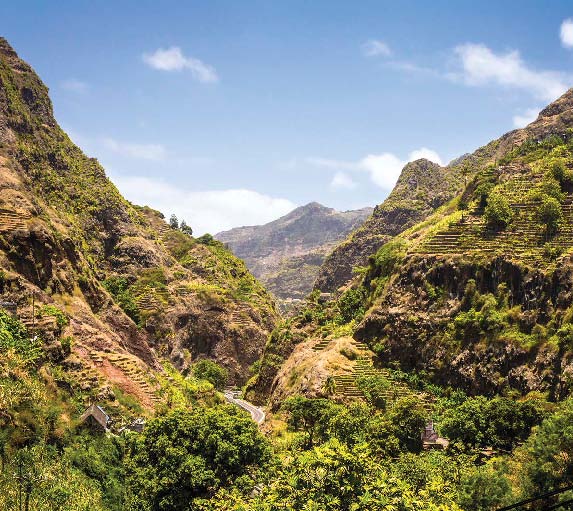
In the Cape Verde Islands, Darwin observed seashells fossilized in rock high in the mountains. This suggests that the mountainside was once the bottom of the sea.
CHARLES DARWIN
In the 1830s, an English naturalist named Charles Darwin set out on an expedition on a ship called the HMS Beagle. Darwin, who was born in 1809, visited many different places during the Beagles voyage. He studied many plants, animals, and rocks. In his travels, Darwin observed how an earthquake could raise up parts of the land and bury others. Darwin had many ideas about how Earth changes, including thoughts on how atolls form.
UNDERWATER VOLCANOES
A volcano begins with a hot spot in Earths crust. Molten rock, called lava, erupts through cracks in the ocean floor. When the lava comes into contact with seawater, it cools and forms solid rock. One of the most common types of underwater lava is called pillow lava.
After thousands of years and thousands of eruptions, enough layers of rock collect to form a seamount, or underwater mountain. Underwater volcanoes form new landmasses at a rate of about an inch (2.5 cm) a year.
Did you know that most of the deep ocean floor is made of lava flows? Thats because there are more active volcanoes on the ocean floor than on land. Many are located along mid-ocean ridgesplaces where the edges of the plates that form Earths crust come together.
READING THE ROCKS
ROCK FORMED FROM COOLED LAVA IS CALLED IG NEOUS ROCK. TWO OF THE MOST COMMON TYPES ARE BASALTAND OBSIDIAN.
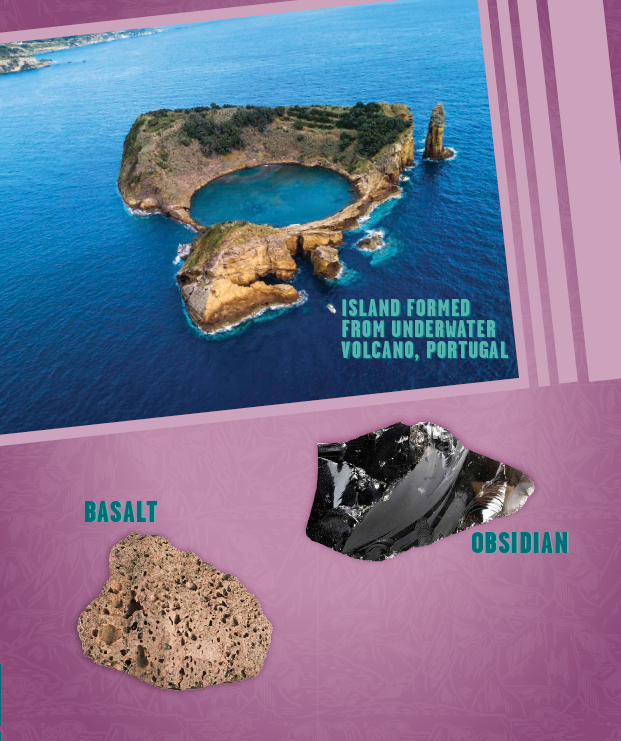
Basalt is a common type of igneous rock with a very rough appearance. Obsidian is smooth and glassy.
VOLCANIC ISLANDS
When a volcano becomes tall enough to rise above the oceans surface, it forms a volcanic island. Some of the tallest mountains in the world are actually volcanic islands. When measured from base to summit, these islands often are taller than mountains found on land, even Mount Everest.
Mauna Kea, a volcano in Hawaii, is the tallest sea mountain in the world and one of the tallest mountains of any kind on Earth. It last erupted thousands of years ago.
Sometimes, volcanic islands grow large enough for people to live on them. Despite the dangers of living near a volcano that might erupt, many volcanic islands are inhabited. Some examples are Hawaii, the Philippine Islands, the islands of Indonesia, the Galpagos Islands, the Samoan Islands, and New Zealand.




